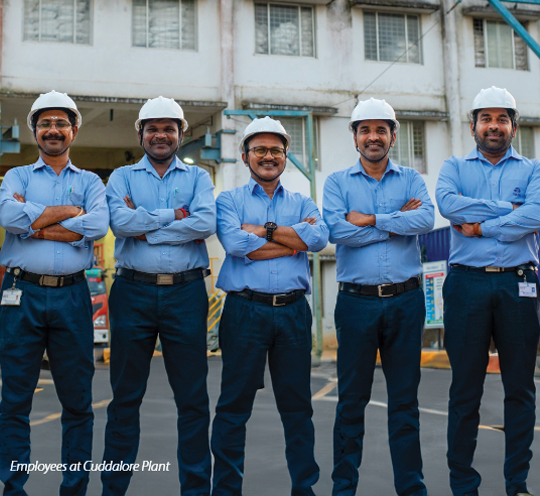We believe that effective risk identification and management is vital for business to be resilient and grow sustainably. We periodically assess the risks and invest in minimising the same through concerted initiatives.

The risk-related information outlined in this section is not exhaustive and is for information purposes only. The section lists forward-looking statements that may involve risks and uncertainties. Our actual results, including business operational performance, could differ materially on account of risks and uncertainties not currently envisaged, or due to risks that we currently believe are not material. Readers are also advised to exercise their own judgement in assessing the risks associated with the Company.
TCL’s Risk Management Framework has matured over the past several years. The framework identifies, prioritises, manages, monitors and reports both, the key risks as well as the emerging risks – that can impact the achievement of the organisation’s objectives.
The Company’s Risk Management Framework is founded on sound organisation design principles and is enabled by an effective review mechanism. Risk management at Tata Chemicals forms an integral part of the Management’s focus.
TCL has adopted an integrated Enterprise Risk Management framework, which has been implemented across the organisation. We adhere to ISO 31000 and to the Committee of Sponsoring Organisations’ (COSO) Enterprise Risk Management Framework.
As we manage our business in a VUCA (Volatile, Uncertain, Complex and Ambiguous) environment, Enterprise Risk Management (ERM) enables us to identify and manage our risks by implementing risk mitigation plans and allocating the necessary resources. It also helps us focus on becoming resilient through uncertain business and geopolitical environments.
The Company operates in a dynamic environment which not only provides opportunities but also exposes the business to various risks:
To proactively identify and manage our key risks for achieving our strategic objectives, we have put in place a well-defined ERM framework. Its key highlights are:
Failure to address climate change related risks – Reduce carbon emission, Maintain circular economy (water, solid waste and renewables) and preserve nature and biodiversity
Strategic Objective 3
Global economic slowdown impacting demand and pricing
Strategic Objective 4
Embracing digitalisation as a key lever of business growth
Strategic Objective 5
Challenges of attracting and retaining talent in remote manufacturing locations
Strategic Objective 5
Loss of data & compromised operations resulting from cyber attacks
Strategic Objective 4, Strategic Objective 5
Securing raw materials, energy sources and upgradation of logistics infrastructure to support growth plans
Strategic Objective 4
Managing international debt and tightening interest rates
Not Applicable
Unfunded pension liabilities of overseas subsidiaries (UK Natrium Holdings)
Not Applicable
Policy changes which could impact the Company’s operations at large
Strategic Objective 4
Ensuring containment of safety hazards (behaviour, workplace, process & product)
Strategic Objective 5